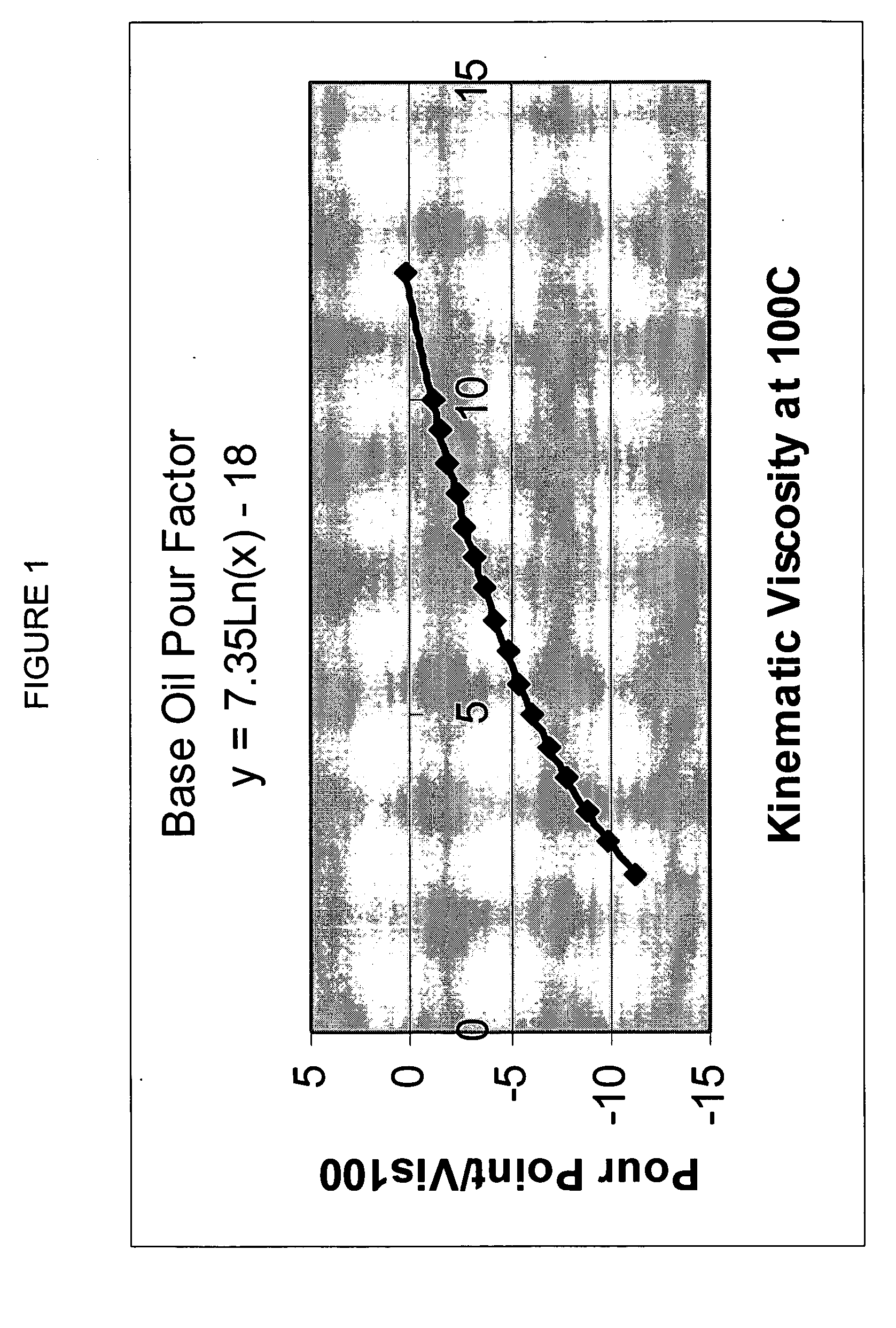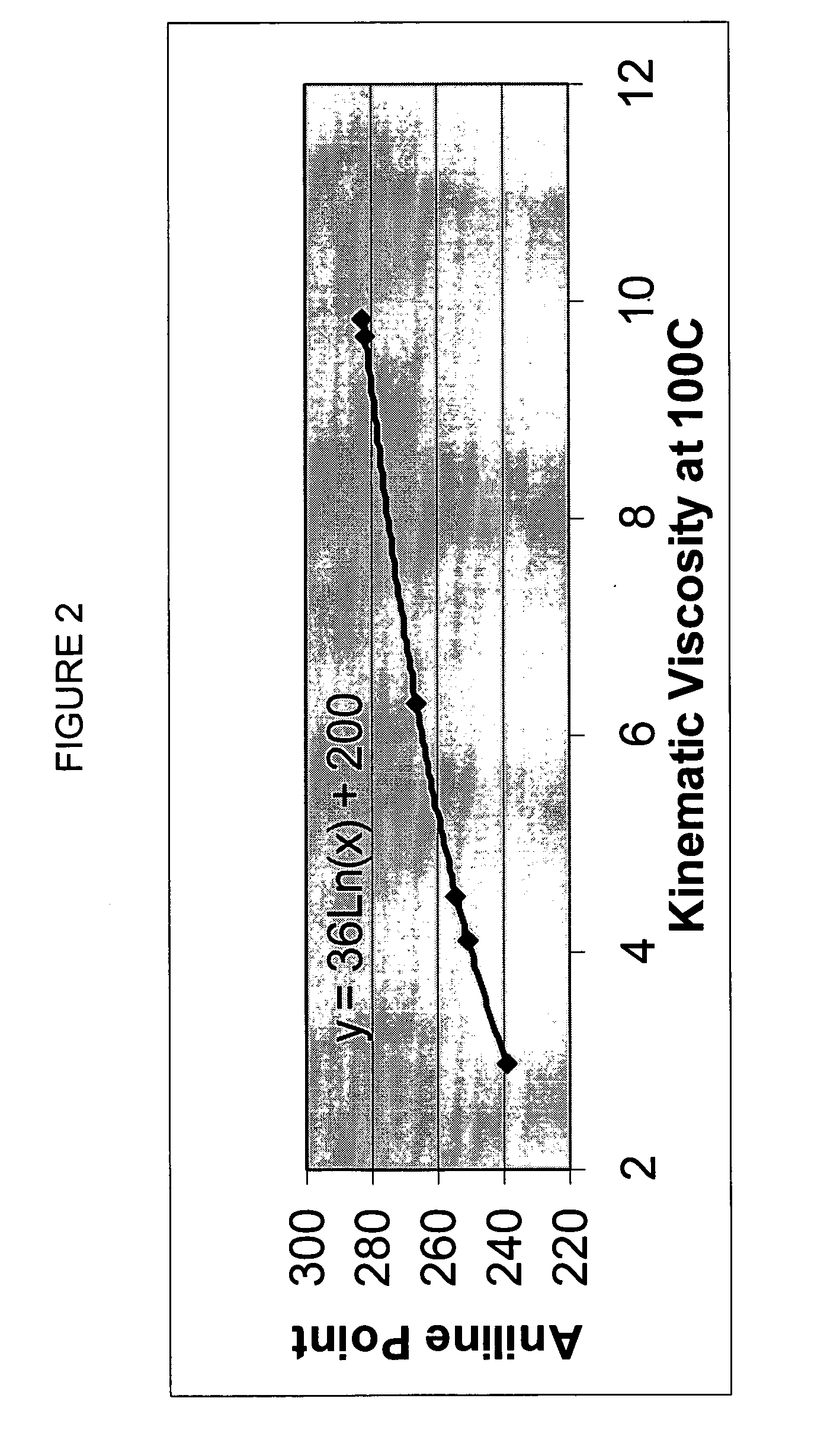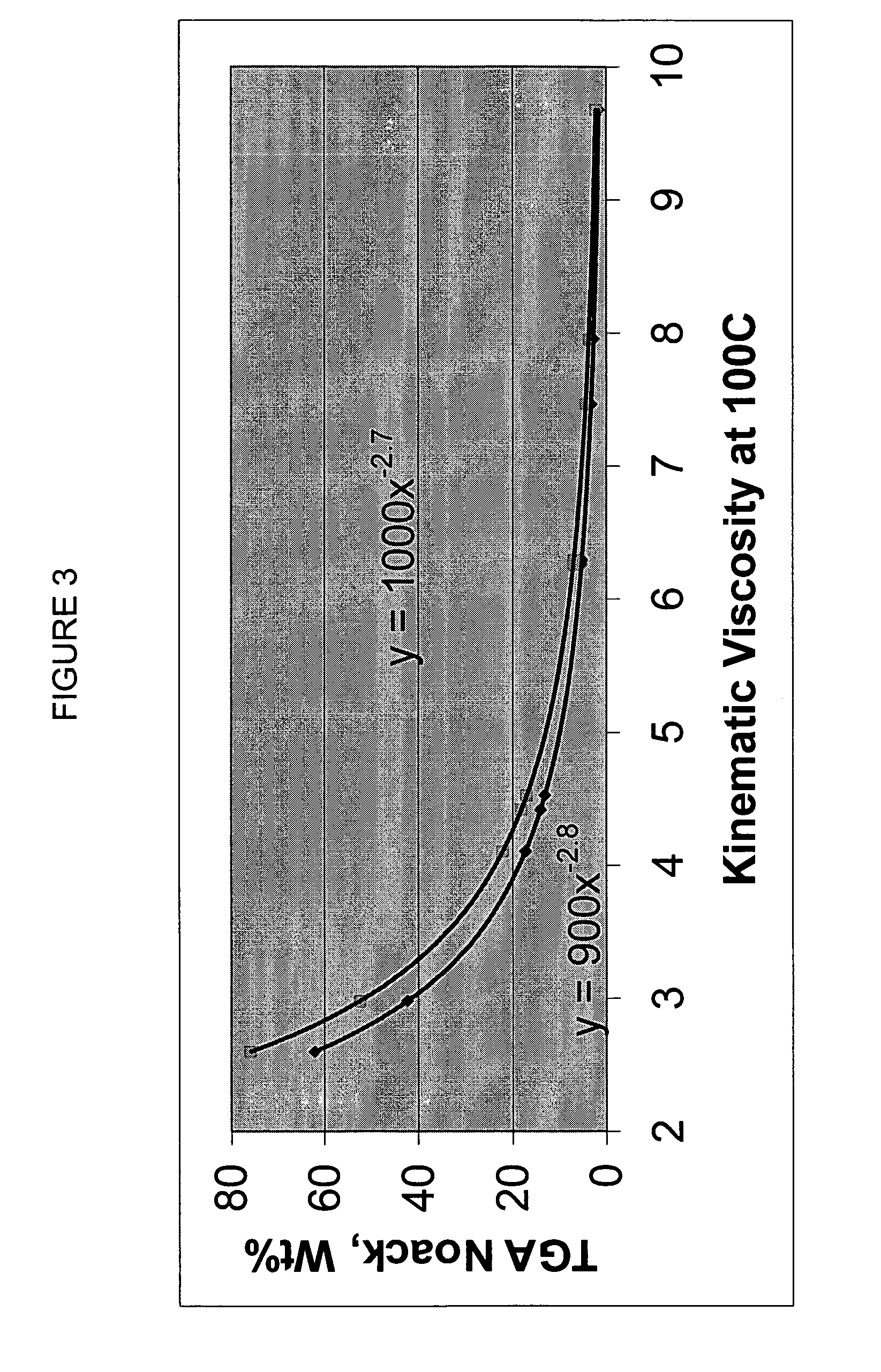Process for manufacturing lubricating base oil with high monocycloparaffins and low multicycloparaffins
a technology of monocycloparaffin and lubricating base oil, which is applied in the direction of hydrocarbon oil treatment products, petroleum chemical modification, lubricant composition, etc., can solve the problems of reducing oxidation stability and viscosity index, and high weight percents of molecules containing multicycloparaffins, so as to improve additive solubility and elastomer compatibility, excellent oxidation stability, and high viscosity index
- Summary
- Abstract
- Description
- Claims
- Application Information
AI Technical Summary
Benefits of technology
Problems solved by technology
Method used
Image
Examples
example 4 , example 5 , example 6 , and example 7
Example 4, Example 5, Example 6, and Example 7
[0114] Four lubricating base oils with kinematic viscosities between 4.0 and 5.0 cSt at 100° C. were prepared by hydroisomerization dewaxing Fischer-Tropsch wax and fractionating the isomerized oil into different distillate fractions. The properties of these samples are shown in Table III.
TABLE IIIPropertiesExample 4Example 5Example 6Example 7CVX SampleNGQ9712PGQ1118NGQ9608NGQ9939IDWax FeedWOW9107WOW9237WOW8782WOW8684Hydroisom-673652700682erizationTemp, ° F.Hydroisom-Pt / SAPO-11Pt / SAPO-11Pt / SAPO-11Pt / SAPO-11erizationDewaxingCatalystReactor100030010001000Pressure,psigViscosity at4.1044.3974.4154.524100° C., cStViscosity145158147149IndexAromatics,0.00860.0109wt %FIMS, Wt %of MoleculesParaffins88.479.889.189.4Monocyclo-11.621.210.910.4paraffinsMulticyclo-0.00.00.00.2paraffinsTotal100.0100.0100.0100.0API Gravity41.7841.6Pour Point,−20−31−12−17° C.Cloud Point,−9+3−8−10° C.Ratio of>100>100>10052Mono / Multi-cycloparaffinsRatio of Pour−4.87−7.05...
example 8
, Comparative Example 9, Example 10, and Example 11
[0116] Four lubricating base oils with kinematic viscosities between 6.0 and 7.0 at 100° C. were prepared by hydroisomerization dewaxing Fischer-Tropsch wax and fractionating the isomerized oil into different distillate fractions. The properties of these samples are shown in Table IV.
TABLE IVComparativePropertiesExample 8Example 9*Example 10Example 11CVX SampleNGQ9994NGQ9289NGQ9941NGQ9988IDWax FeedWOW8684WOW8684WOW8684WOW8684Hydroisom-676685690681erizationTemp, ° F.Hydroisom-Pt / SAPO-11Pt / SSZ-32*Pt / SAPO-11Pt / SAPO-11erizationDewaxingCatalystReactor1000100010001000Pressure,psigViscosity at6.266.9726.2976.295100° C., cStViscosity158153153154IndexAromatics,0.08980.0141wt %FIMS, Wt %of MoleculesParaffins77.071.482.576.8Monocyclo-22.626.417.522.1paraffinsMulticyclo-0.42.20.01.1paraffinsTotal100.0100.0100.0100.0API Gravity40.340.240.2Pour Point,−12−41−23−14° C.Cloud Point,−1−2−6−6° C.Ratio of56.512.0>10020.1Mono / Multi-cycloparaffinsRatio ...
example 12
, Comparative Example 13, Example 14, and Example 15
[0118] Four lubricating base oils with kinematic viscosities between 7.0 and 8.0 cSt at 100° C. were prepared by hydroisomerization dewaxing Fischer-Tropsch wax and fractionating the isomerized oil into different distillate fractions. The properties of these samples are shown in Table V.
TABLE VComparativePropertiesExample 12Example 13Example 14Example 15CVX SampleNGQ9287NGQ9288NGQ9284NGQ9535IDWax FeedWOW8684WOW8684WOW8684WOW8782Hydroisom-679685674694erizationTemp, ° F.Hydroisom-Pt / SSZ-32Pt / SSZ-32Pt / SSZ-32Pt / SAPO-11erizationDewaxingCatalystReactor1000100010001000Pressure,psigViscosity at7.1827.0237.4687.953100° C., cStViscosity159155170165IndexAromatics,0.00560.00370.0093wt %FIMS, Wt %of MoleculesParaffins71.369.081.487.2Monocyclo-27.128.418.612.6paraffinsMulticyclo-1.62.60.00.2paraffinsTotal100.0100.0100.0100.0API Gravity39.62Pour Point,−27−33−9−12° C.Cloud Point,+6−4+10+13° C.Ratio of16.910.9>10061Mono / Multi-cycloparaffinsRatio ...
PUM
 Login to View More
Login to View More Abstract
Description
Claims
Application Information
 Login to View More
Login to View More - R&D
- Intellectual Property
- Life Sciences
- Materials
- Tech Scout
- Unparalleled Data Quality
- Higher Quality Content
- 60% Fewer Hallucinations
Browse by: Latest US Patents, China's latest patents, Technical Efficacy Thesaurus, Application Domain, Technology Topic, Popular Technical Reports.
© 2025 PatSnap. All rights reserved.Legal|Privacy policy|Modern Slavery Act Transparency Statement|Sitemap|About US| Contact US: help@patsnap.com



